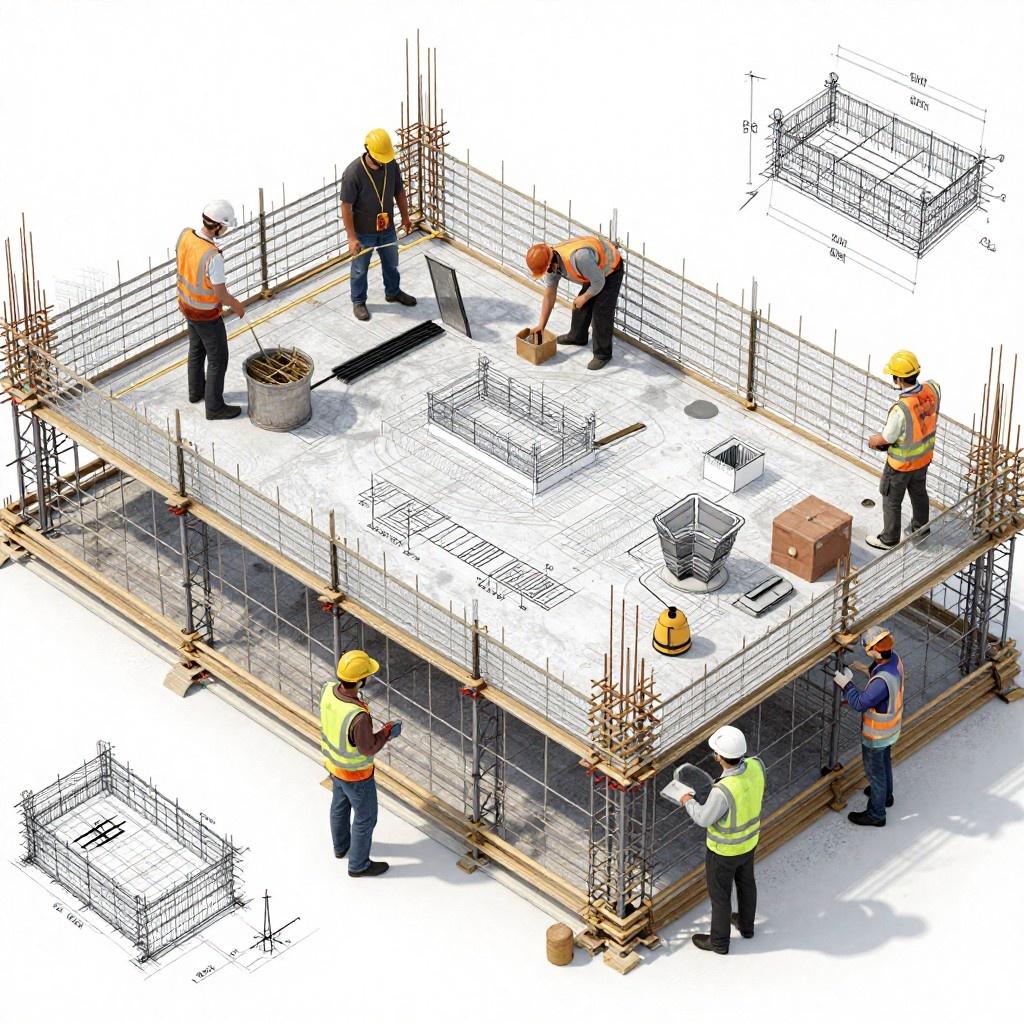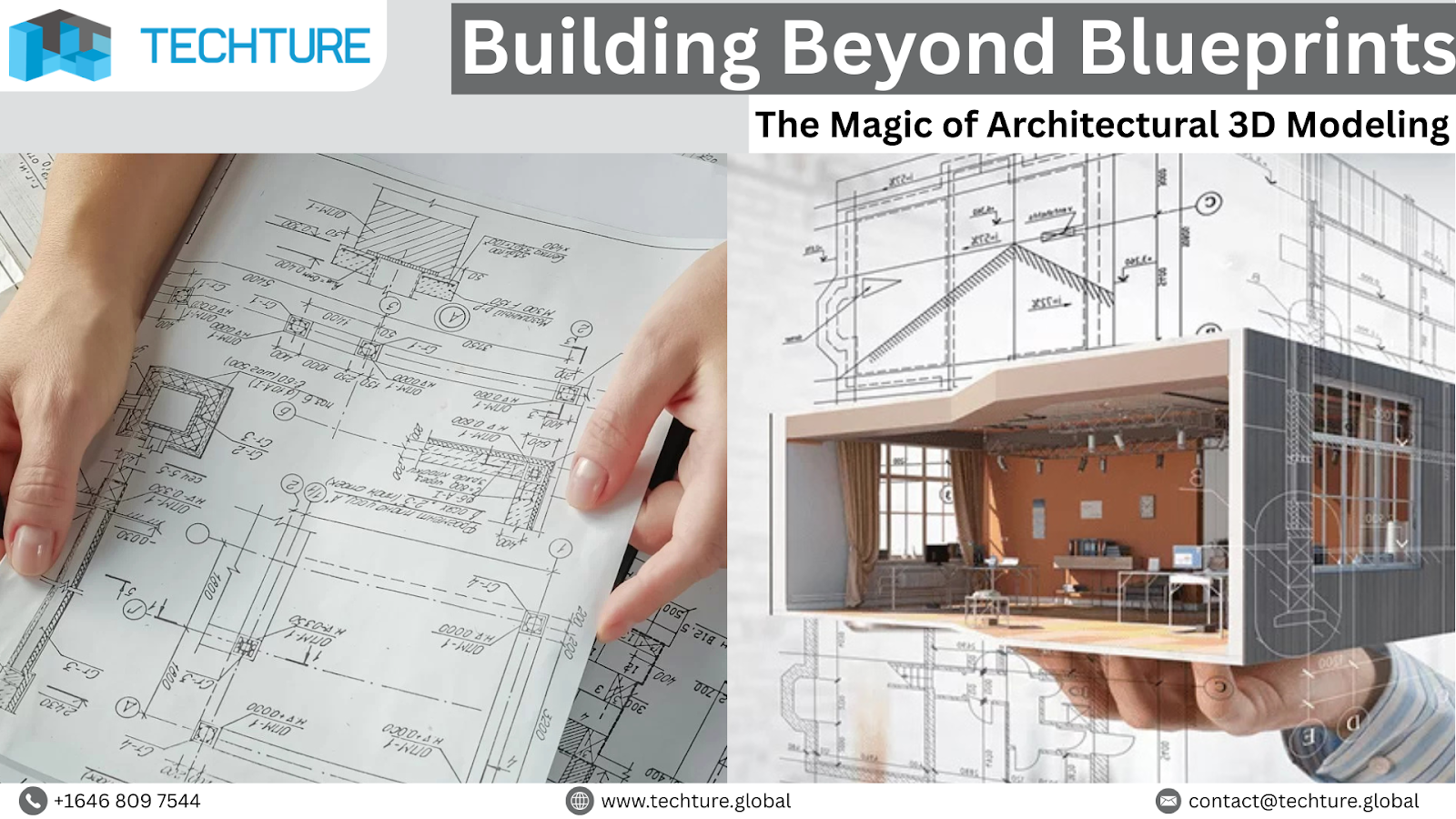
Introduction to Architectural 3D Modeling
Imagine your traditional architectural Blueprint, sketches, and 2D drawings come into a 3D structure where there is no room left for interpretation gaps and missed details. This is where architectural 3D modeling comes in,
This Architectural 3D Modeling is an innovative way to imagine, design, plan, and communicate, redefining spatial understanding, design flexibility, and empowering architects to enhance reliability and efficiency.
This article will help you understand Architectural 3D Modeling in depth and will help you understand its importance, use cases, and techniques, the software used, and the workflow, so that architectural enthusiasts can perform best practices.
Why Architectural 3D Modeling Matters
The shift from the traditional 2D way to 3D architectural modeling is not just about the fascinating aesthetics; it combines a comprehensive bunch of factors that add up to better results. Let’s list the following factors one by one:
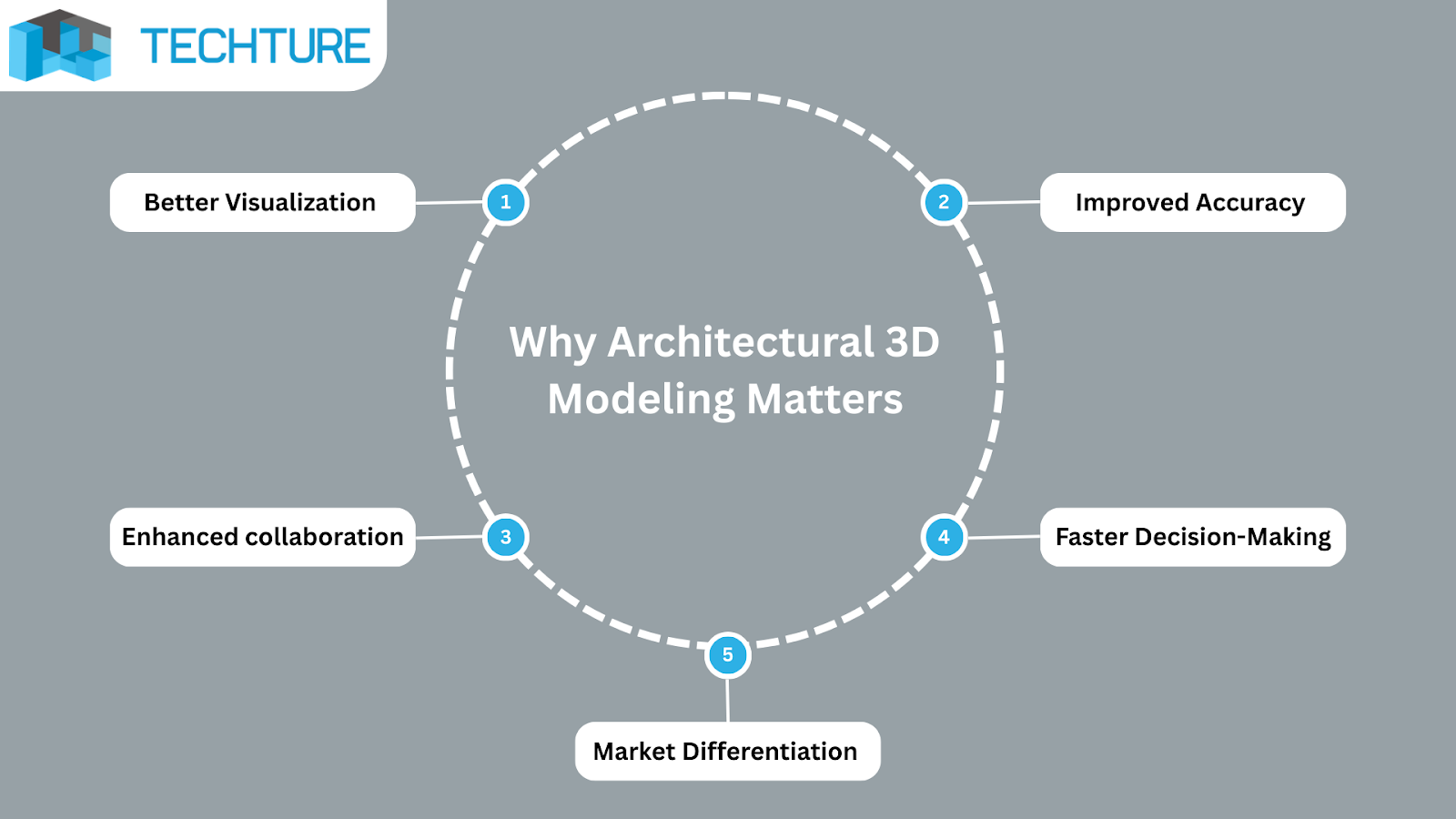
- Better Visualization: With 3D architectural visualization, the clients can see exactly how the final look of the design will be, eliminating the need for guesswork.
- Improved Accuracy: Such a 3D design ensures precise measurements, reducing costly construction errors and rework
- Enhanced collaboration: leverage team collaboration to coordinate seamlessly within the same model between architecture, structure, and MEP consultants.
- Faster Decision-Making: The realistic visualization of the model helps to speed up approvals from clients
- Market Differentiation: Developer gains a powerful edge over others by showcasing 3D architectural renderings in the marketing material
Applications & Use Cases of Architectural 3D Modeling
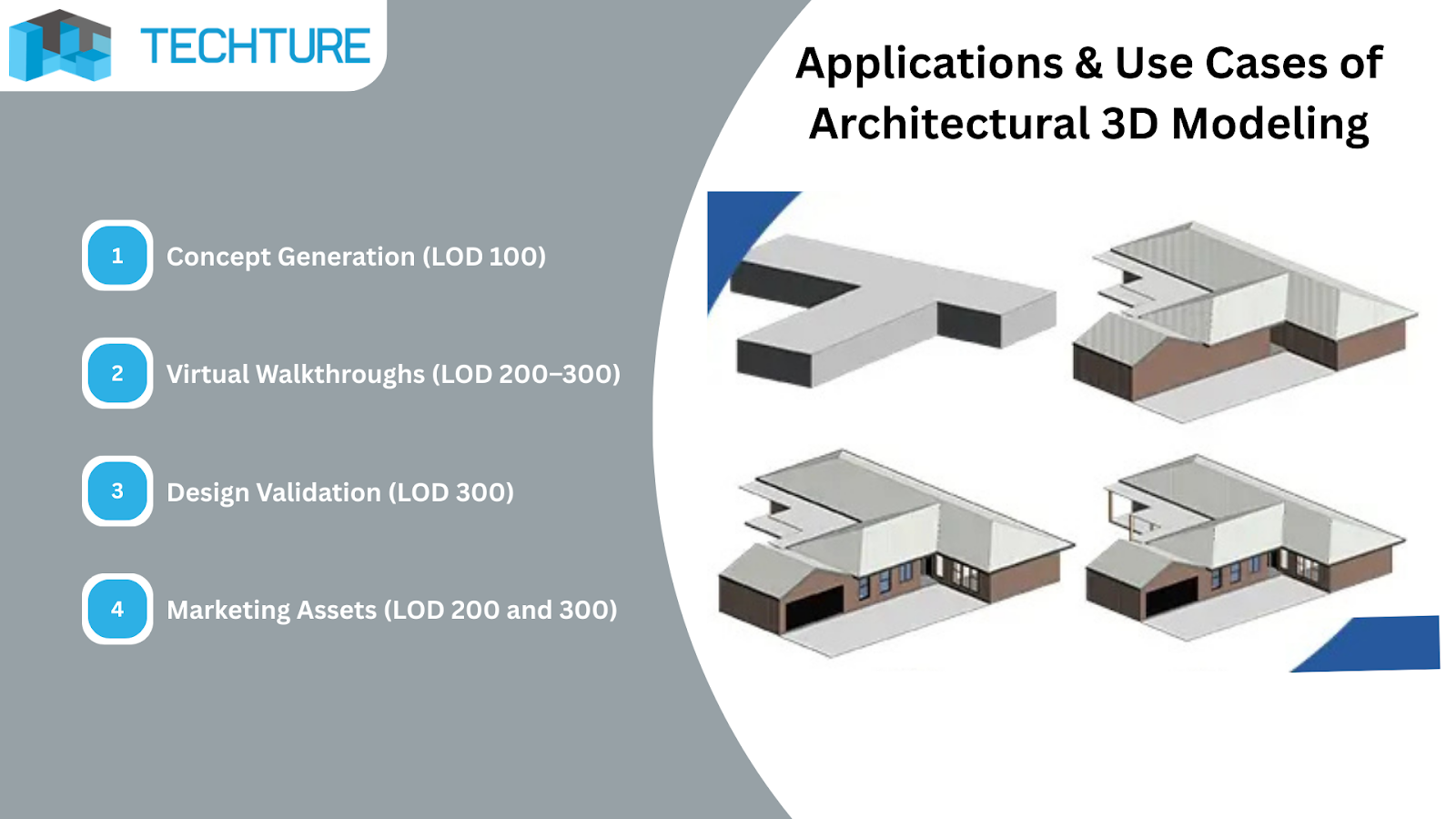
Architectural 3D modeling has diverse applications across design and workflows:
- Concept Generation (LOD 100): An early-stage conceptual massing model helping architects to communicate basic design without getting into fine details.
- Virtual Walkthroughs (LOD 200–300): Clients can experience enhanced, clear visualization before construction for exterior architectural and interior design, ensuring
- Design Validation (LOD 300): Teams can examine models against structural, MEP, and regulatory standards to ensure compliance. Minimizing clashes and rework.
- Marketing Assets (LOD 200 and 300): With the precise & appropriate detail in 3D architectural modeling, you can ensure excellent visuals for brochures, websites, and presentations.
Types & Techniques in Architectural 3D Modeling
Different projects require different modeling approaches to achieve their unique goals. Let's go through them one by one, as listed below, for better understanding:
- Conceptual Massing Models: These are generally used for early-stage design for simple geometry.
- Mesh/Polygonal Models: This method ensures precise photorealistic 3D architecture visualization results.
- Parametric Design: a defined process carried out with defined rules, with tools like Grasshopper, enabling rapid iterations.
- Building Information Modeling: A data-rich model incorporating data geometry and lifecycle management
- Point-Cloud Modeling: A laser-scanned method that converts data into accurate models
Software & Tools Powering Architectural 3D Modeling
Below are some of the powerful tools listed that are used in architectural modeling, which can be used based on project requirements, complexity, and budget:
- Revit: Industry-standard BIM software
- SketchUp: Used for Conceptual modeling
- Rhino/Grasshopper: Ideal for parametric designs.
- Blender: It's an open source tool for detailed visualization
- 3ds Max: Mainly used for photorealistic rendering
- Chief Architecture: Widely used for residential designs
Integrating Immersive Technologies: VR & AR in 3D Modeling
The rise of Virtual Reality (VR) & Augmented Reality (AR) has transformed 3D models. With the help of virtual walkthroughs, the clients can explore the unbuilt spaces without actually constructing the building, which helps in enhancing the feedback loops and understanding of the project, eliminating rework, and reducing the redesign cycle by giving stakeholders the edge to give real-time insights.
Workflow: From Blueprint to 3D Model Exploration
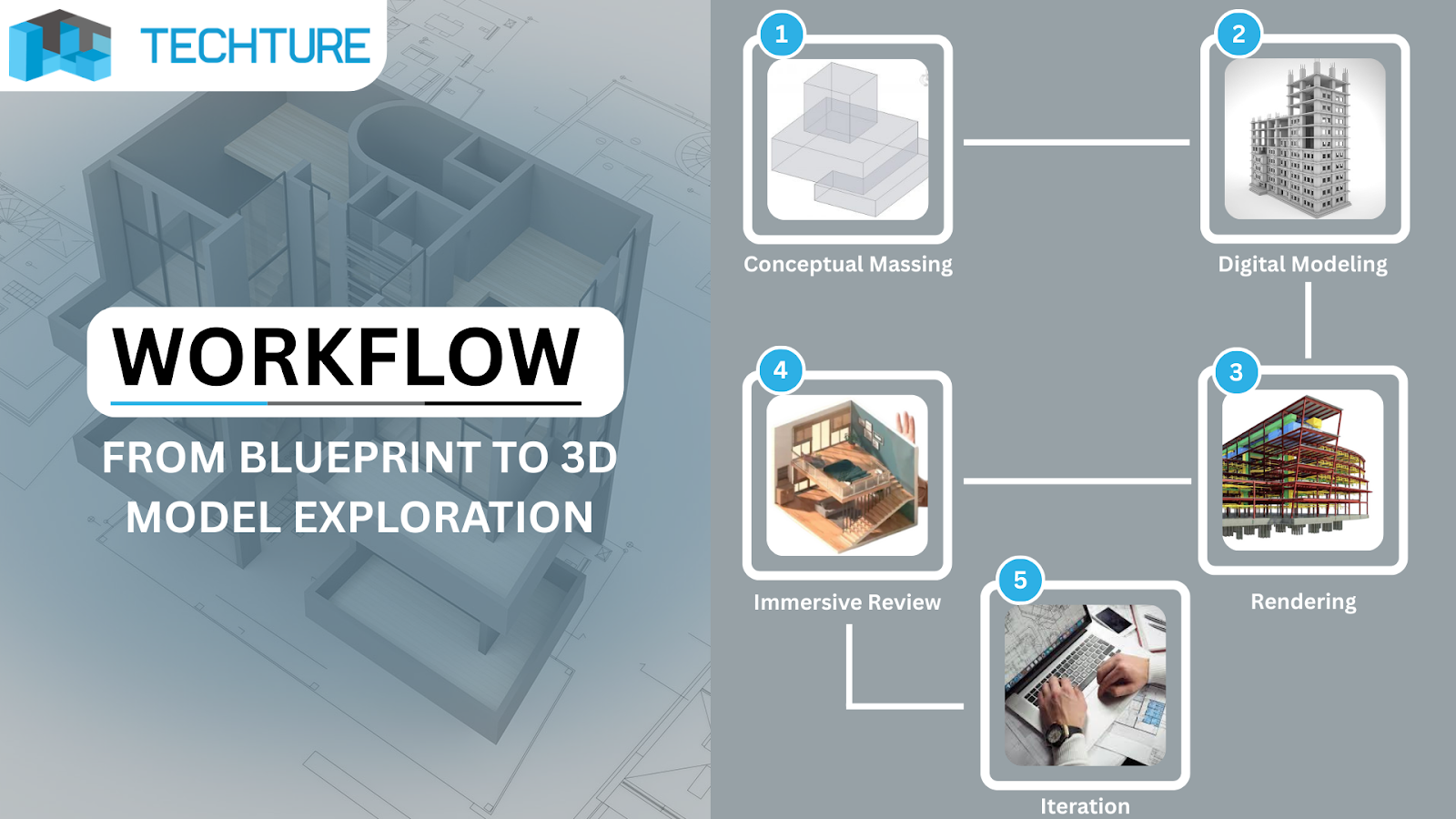
This is the workflow of a 3D model from a blueprint. Let's explore each point in the pipeline one by one:
- Conceptual masing: This step involves testing the layout with different design elements.
- Digital Modeling: The Next step is building accurate structures in software.
- Rendering: This is the process of creating 2D and 3D images of a proposed architectural design.
- Immersive Review: this step consists of exploring the model in Virtual Reality (VR) & Augmented Reality (AR).
- Iteration: after all the above processes, you can refine the design based on the feedback.
Best Practices for High-Quality Architectural 3D Models
So far, we discussed various aspects of architectural 3D modeling, right from why it is important to the workflow. Now, we have listed some of the best practices for architectural 3D models to ensure professional-grade results. Following these steps and practices ensures excellent visuals and technical accuracy :
- Using clear naming Conventions helps you identify layers, families, and components later.
- Maintain the real-world Accuracy in dimensions.
- Logically Organizing Models for Seamless Collaboration.
- Integrating Proper Details for proper performance.
- Optimize Render Efficiency, reducing lags.
Enhancing Sustainability Through 3D Modeling
Sustainability is not just the main pillar of any innovation in modern times, but it is also a vital responsibility. Architectural 3D modeling helps you in energy simulations ,helping to predict energy consumption. Also, enable us to optimize building orientation for natural light and examine the eco-friendly options before procurement.
All these points together give an edge to reduce waste and promote sustainability.
Conclusion
Architectural 3D modeling is revolutionizing the way architects, designers, and stakeholders visualize, plan, and execute projects with precision and efficiency. By enabling better collaboration, sustainability insights, and immersive experiences, it bridges the gap between imagination and reality. Ultimately, it ensures smarter designs, reduced risks, and enhanced value across the entire building lifecycle.
FAQs
Q1. Which software is best for architectural 3D modeling?
Ans: It depends on the project.
- Revit is best for BIM workflows
- SketchUp for conceptual design
- 3ds Max or Blender for realistic renderings.
Q2. How much does architectural 3D modeling cost?
Ans: The costs may vary widely depending on complexity.
Q3. Can 3D architectural models be used for virtual reality (VR) walkthroughs?
Ans: Yes, 3D architectural models can be used for virtual reality (VR) walkthroughs
Q4. What types of projects benefit most from architectural 3D modeling?
Ans: Residential, commercial, and urban-scale projects
Q5. Does architectural 3D modeling help with sustainable building design?
Ans: Yes, 3D models support simulations for energy use, daylight, and material performance
Q6. How accurate are architectural 3D models compared to built structures?
Ans: High-quality models can be accurate to within millimetres if the inputs are precise.
.png)


